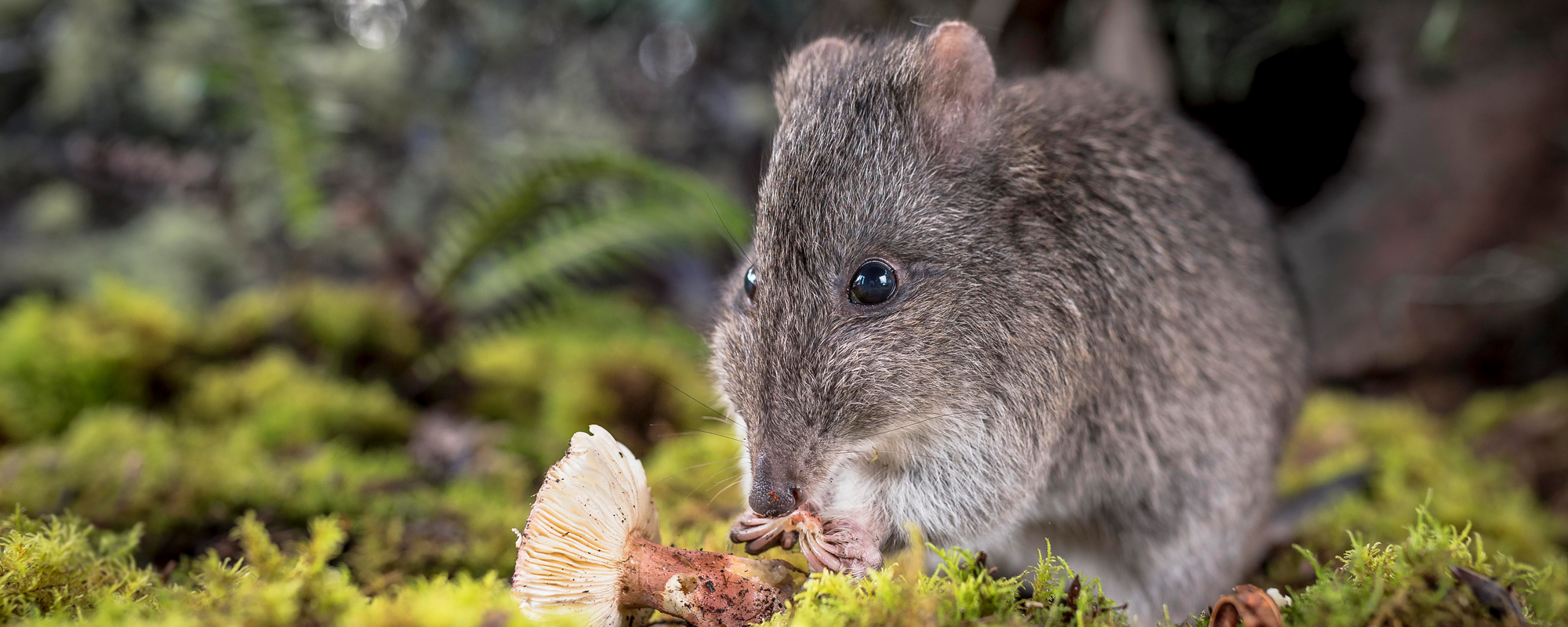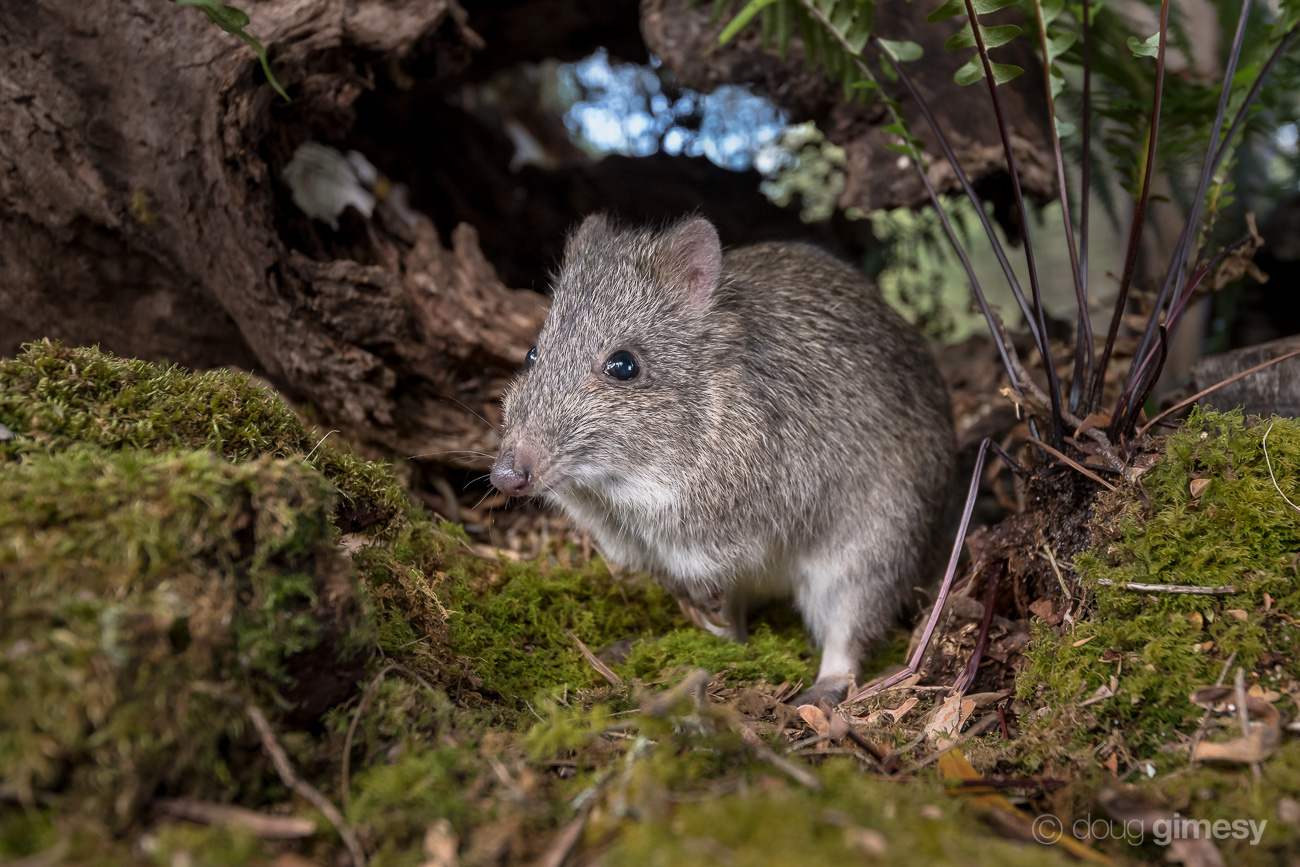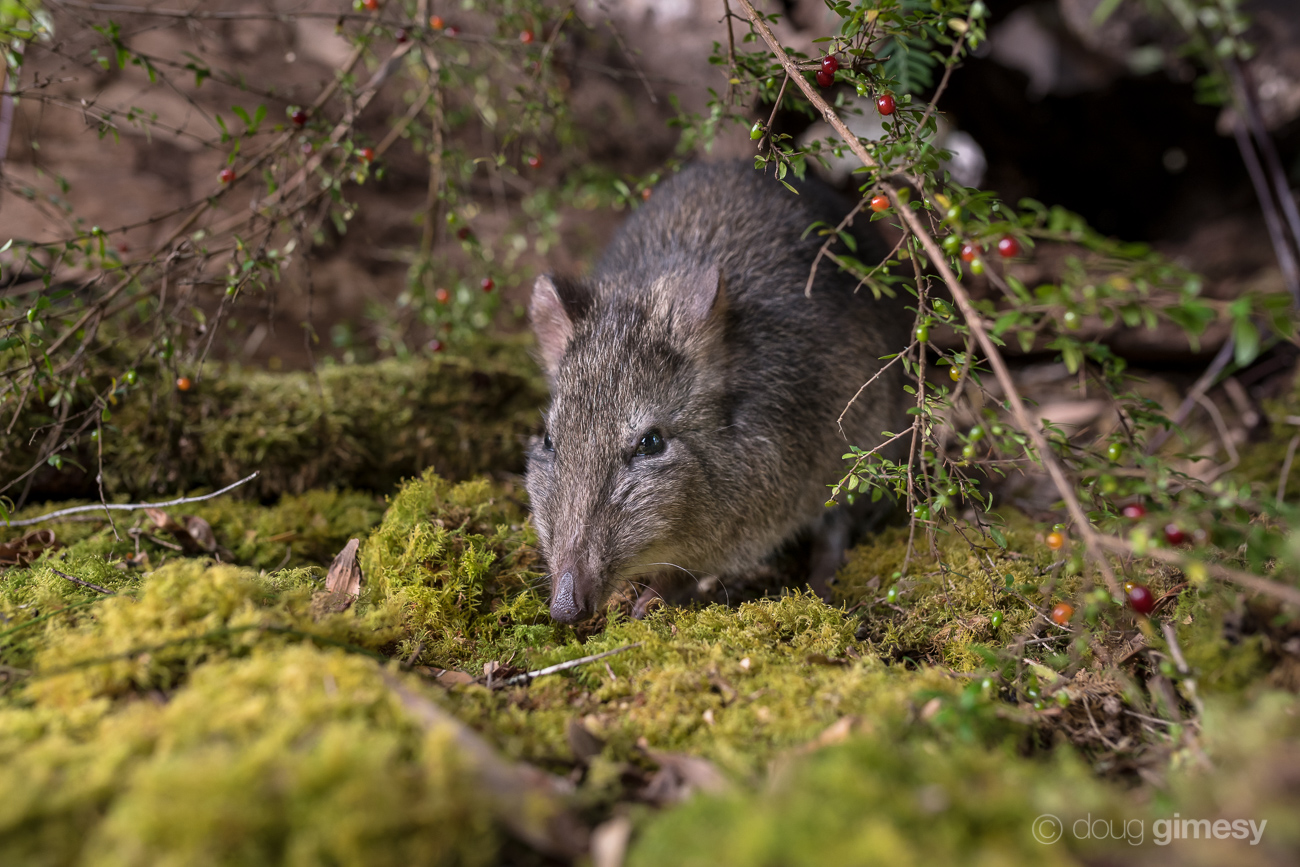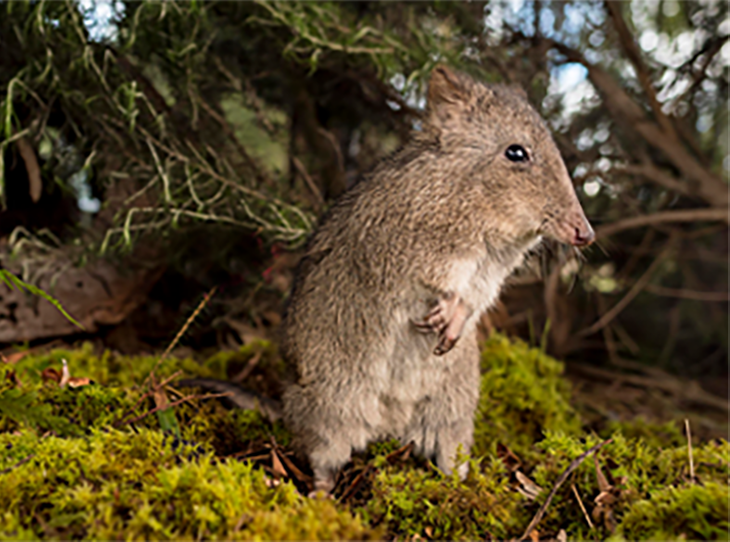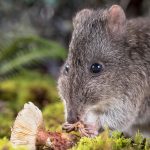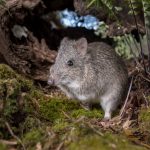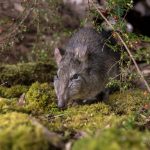Long-nosed Potoroos
(Potorous tridactylus)
An Otways favourite, the Long-nosed Potoroo is a tiny, fluffy cousin of the kangaroo. Although they are still persisting in the Otways, they are nocturnal, so not often seen.
DESCRIPTION
Long-nosed potoroos are reddish-brown to grey small marsupials that live in both forests and coastal woodlands. At first glance, they look very much like bandicoots, but when they hop away with their front feet tucked into their chests they show a closer resemblance to members of the kangaroo family. Their characteristic long noses are tapered, with a naked patch of skin extending onto the snout. Tails are sparsely-furred and sometimes have a white tip. Their nests are made from grass, mosses and bark.
Long-nosed potoroos require low, dense vegetation that enables them to hide from predators and wetter areas that produce their favourite foods – fungi and seeds. Fungi are very important in the potoroos’ diet, and they consume around 50 species in the winter months, and more plants, fruits and flowers in the summer.
After sniffing the ground to locate a possible food source, the potoroos use their long, slightly curved claws on their front feet to dig it up. Like bettongs and bandicoots, long nosed potoroos disturb the soil when they are digging. This keeps the soils in the forest floor healthy and aerated, with the fungi spores released and spread as the animals forage, all contributing to a balanced ecosystem.
Female long-nosed potoroos reach sexual maturity around one year of age, and raise one young per pregnancy, but can produce up to four young each year.
As with most small marsupials, the long-nosed potoroos’ major predators are foxes and cats, and much habitat has been lost through urbanisation and agriculture. Inappropriate fire regimes, with more severe and frequent fires, destroy the understorey, taking away the shelter that is vital for small animals. Since predators have been removed from the grounds of Wildlife Wonders, long-nosed potoroos are able to live safely, aerating the forest floors as they search for their favourite fungi.
Want to see long-nosed potoroos at Wildlife Wonders? Book here!

